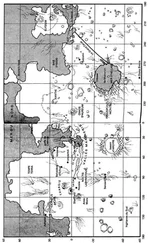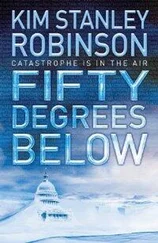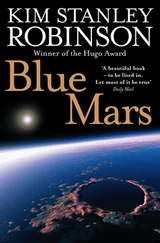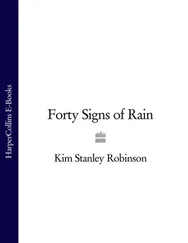Often he heard the other arboreal primates, greeting the day. These days they seemed to be sleeping on the steep slope across the creek from him. The first cry of the morning would fill the gorge, low and liquid at first, a strange cross between siren and voice. It never failed to send a shiver down his spine. That was something hardwired. No doubt the hominid brain included a musical capacity that was not the same as its language capacity. These days people tended to use their musical brains only for listening, thus missing the somatic experience of making it. With that gone the full potential of the experience was lost. ‘Oooooop!’ Singing, howling; it all felt so good. ‘Ooooh-oooooooooooo-da.’
Something else to consider writing about. Music as primate precursor to language. He would add it to his list of possible papers, already scores if not hundreds of titles long. He knew he would never get to them, but they ought to be written.
He had extended his roof to cover the cut in the railing and floor through which he dropped onto his rope ladder, and so he was able to descend to the ground without getting very wet. Onto the forest floor, not yet squishy, out to his van, around D.C. on the Beltway, making the first calls of the day over his headset. Stop in at Optimodal, singing under his breath, ‘I’m optimodal, today – optimodal, today!’ Into the weight room, where, it being six AM, Diane was working on one of the leg machines. Familiar hellos, a bit of chat about the rain and her morning calls, often to Europe to make use of the time difference. It was turning out to be a very cool summer in Europe, and rainstorms were being welcomed as signs of salvation; but the environmental offices there were full of foreboding.
Shower, change, walk over to NSF with Diane. Amazing how quickly people developed sets of habits. They could not do without them, Frank had concluded. Even his improvised life was full of them. It might be said that now he had an array of habits that he had to choose from, a kind of menu. Up to his office, check phone messages and e-mail, get coffee, start on the messages that needed action, and the making of a daily Things To Do list out of the standing one on the whiteboard. Bit of breakfast when his stomach reminded him it was being neglected.
One of his Things To Do was to attend another of Diane’s meetings late that morning, this one attended by various division heads, including Anna, and some members of the Science Board.
Diane had been busy organizing her own sense of the climate problem, structuring it in the broadest terms possible. First, however, she had some good news to share; the appropriations committees in Congress had streamlined approval of two billion dollars for NSF to engage with climate issues as soon as possible. ‘They want us to take action, they said, but in a strictly scientific manner.’
Edgardo snorted. ‘They want a silver bullet. Some kind of technical fix that will make all the problems go away without any suffering on Wall Street.’
‘That doesn’t matter,’ Diane said. ‘They’re funding us, and we’ll be making the determinations as to what might work.’
She clicked to the first of her Power Point pages. ‘Okay. Global environmental problem, having to do with habitat degradation and a hundred parts per million rise in atmospheric carbon, resulting in species loss and food insecurity. You can divide it into land, ocean, and atmosphere. On land, we have loss of topsoil, desertification, and in some places, flooding. In the oceans, we have sea level rise, either slow because of general warming, already happening, or else fast, as a result of the West Antarctic ice sheet detaching. Probability of the Antarctic ice sheet coming off is very hard to calculate. Then also thermohaline circulation, in particular the North Atlantic stall in the great world current. Also fisheries depletion, also coral reef loss. The oceans are more of a source of trouble than we’re used to thinking. In the atmosphere, carbon dioxide build-up of course, very well known, but also methane and other more powerful greenhouse gases.’
She clicked to the next slide. ‘Let’s start with atmosphere, particularly the carbon dioxide aspect. Now up to 400 parts per million, from 280 before the industrial revolution. Clearly, we need to slow down how much CO2 we’re putting into the atmosphere, despite the industrialization of China, India, and many other places. Then also, it would be interesting to see if we could remove and sequester from the atmosphere any significant amounts of CO2 that are already up there. Drawdown studies, these are sometimes called.
‘What’s putting carbon into the atmosphere? The bulk of it comes from energy production and cars. We’ve been burning fossil fuels to create electricity and to move us and our stuff around. If we had cleaner technologies to create electricity and to power transport, we would put less carbon in the air. So, we need cleaner cars and cleaner energy production. There’s been a lot of work done on both fronts, with some very exciting possibilities explored, but bottom line, the oil and car industries are very big, and they work together to obstruct research and development of cleaner technologies that might replace them. Partly because of their lobbying here in D.C., research into cleaner technologies is under-funded, even though some of the new methods show real promise. Some are even ready to go, and could make a difference very rapidly, but are still too expensive to compete financially, especially given the initial costs in installing a new infrastructure, whatever it might be.
‘So. Given this situation, I think we have to identify the two or three most promising options in each big carbon area, energy and transport, and then immediately support these options in a major way. Pilot projects, maybe competitions with prizes, certainly suggested tax structures and incentives to get private enterprise investing in it.’
‘Make carbon credits really expensive,’ Frank said.
‘Make gas really expensive,’ Edgardo said.
‘Yes. These are more purely economic or political fixes. We will run into political resistance on those.’
‘You’ll run into political resistance on all these fronts.’
‘Yes. But we have to work for everything that looks like it will help, political resistance or not. More and more I’m convinced that this will have to be a multi-disciplinary effort, in the largest sense. The front is very broad, and we can’t avoid the awkward parts just because they’ve got difficulties. I was just mentioning them.’
She clicked to her next slide. ‘Cars. It takes about ten years to replace the fleet of cars on the road, so we need to start now if anything is to be done in a relevant time period. Fuel cell cars, electric, hydrogen. Also, there are some things we could do right away with the current models. Increase fuel efficiency, of course. Could be legislated. Also, fuel flexibility. There is a device that could be added to every conventional car that would enable it to burn gas, ethanol or methanol. Adds only a couple hundred dollars per vehicle. It too could be legislated to be a requirement. This would have a national security aspect, which is to say, if we are unexpectedly cut off from foreign oil supplies, everyone could still burn ethanol in their cars, and we wouldn’t be completely crippled.’
‘Ethanol still puts carbon into the atmosphere,’ Frank pointed out.
‘Yes, but it’s made from biological material that has been drawn down from the atmosphere when the plant material grew. On the plant’s death it was going to rot and enter the atmosphere as carbon anyway. If you burn it and put it in the atmosphere, you can then also draw it back down in the plants that you use for later fuel, so that it becomes a closed-loop system where there is no net gain of carbon in the atmosphere, even though you have moved lots of transport. Whereas burning oil and coal adds new carbon to the atmosphere, carbon that was very nicely sequestered before we burned it. So ethanol is better, and it’s available right now, and works in current cars. Most of the other technologies for cleaner power are a decade away in terms of research and development. So it’s nice that we have something we can deploy immediately. A bridge technology. Clearly this should happen right now.’
Читать дальше












